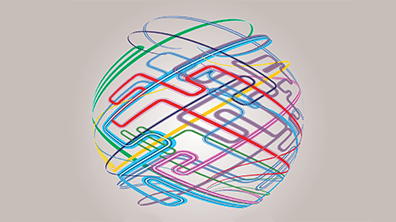Artificial intelligence (AI) refers to the implementation of algorithms that can learn from data (training) and produce outputs (inference) that typically would require human intelligence.
It can also be characterised as the effective imitation of human (and other biological) sensory abilities into what seems like intricate intellectual accomplishments by machines without needing to be explicitly coded to do so. AI can be integrated into larger, more complex systems to enhance its capabilities.
As per the Organisation for Economic Co-operation and Development definition: “An AI system is a machine-based system that, for explicit or implicit objectives, infers, from the input it receives, how to generate outputs such as predictions, content, recommendations, or decisions that can influence physical or virtual environments. Different AI systems vary in their levels of autonomy and adaptiveness after deployment.”
AI is rapidly emerging as a competitive edge in business. Accounting and finance professionals deal with large amounts of data and complex calculations – tasks that can be tedious, time-consuming and prone to error when done manually. Alongside the huge influence of digital transformation and data analytics on the profession in the past few decades, AI can further help automate and optimise these processes, as well as provide new insights and opportunities for accountants and financial professionals.
AI is further revolutionising the way accountants work by providing predictive analytics for financial decision-making. It is also being used more in risk analysis to detect potentially fraudulent transactions and in the back-office for efficiency boosting tasks such as email and document summarisation.
Types of AI
AI varies in complexity and sophistication levels, from specialised, narrow AI that excels at particular tasks, to broader ‘general purpose’ multimodal generative AI (GenAI), and the theoretical artificial general intelligence (AGI) that might one day challenge or exceed human intellect in a wide variety of domains and a multitude of tasks.
Presently, most AI algorithms can be sorted into a hierarchical framework that can be further segmented into different groups based on their operational functions and training approaches. Recent progress in GenAI has also introduced a subcategory of what may be termed 'general purpose’ AI.
For a comprehensive grasp of AI, examining its classifications by purpose, technical approaches and structural hierarchy is useful. We’ll explore that in another article.
Data analytics vs artificial intelligence
While often conflated, traditional data analytics and AI stand as two separate but interlinked entities. Data analysis (an integral step in the analytics process), entails applying systematic rules and logical reasoning to extract insights from datasets. While predominantly applied to historical data, it also frequently incorporates elements such as predictive analytics and forecasting, but crucially includes human input.
AI seeks to supplant this human element. It leverages machines to extrapolate rules from either unlabelled data (unsupervised learning, e.g. customer segmentation by behaviour) or labelled data (supervised learning, e.g. predicting account categories based on labelled types) in the AI ‘training’ phase. These AI algorithms then utilise the generated rules to deduce insights or generate outputs (like predictions, recommendations, and so on) when exposed to new, previously unobserved data. This phase is known as ‘inference’.
Is robotic process automation AI?
Robotic process automation (RPA) is a form of automation that, as the name implies, is implemented to programmatically automate steps for easily repeatable and templated processes normally undertaken by humans, reducing tedium and increasing process efficiency. RPA processes are generally strictly rule-based and cannot typically do the ‘learning’ that true machine learning does.
However, an RPA ‘system’ may incorporate elements of an AI modeI (such as machine learning) to improve performance or accuracy on some of the RPA process steps. A machine-learning algorithm can take completed processes and improve performance of the RPA system by learning from the differences between predictions and expectations. For example, if 90% of an RPA process outputs are accurate and 10% are frequently corrected by a human being, an AI model, specifically a machine-learning algorithm, can be trained on the information and corrected human outcomes to improve the RPA system.
Machine learning represents a subset within the broader hierarchy of AI models that accountants may encounter. In the subsequent article, I will delineate three distinct classifications of AI and discuss how accountants can leverage these various types of AI models.
Accounting Intelligence
This content forms part of ICAEW's suite of resources to support members in business and practice to build their understanding of AI, including opportunities and challenges it presents.





